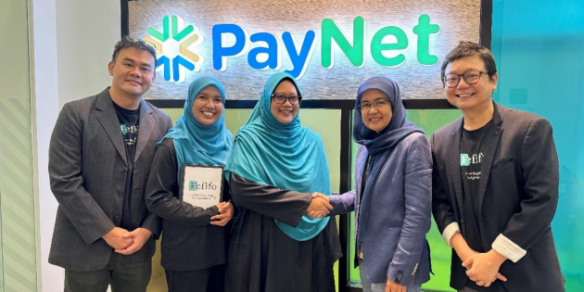Western Digital Named Asia’s First World Economic Forum Sustainability Lighthouse
By Digital News Asia April 21, 2022
- Enjoying sustainability while achieving business goals, called eco-efficiency
- Companies now have a digital playbook and tech tools at their disposal

The World Economic Forum has recognised and awarded Western Digital’s factory at Batu Kawan, Penang, as a Sustainability Lighthouse. By leveraging its vertically integrated smart factory model and implementing 4IR technologies such as IoT sensors, digital twin modeling, analytics powered plant management system and lights-out automation with machine learning, the site achieved a normalized (per unit) reduction in energy by 41 per cent, water consumption by 45 per cent and material waste by 16 per cent, while growing 43 per cent (Compound Annual Growth Rate) in the last four years.
This is the first World Economic Forum Sustainability Lighthouse in Asia, and an added designation on top of the site’s earlier entrance into the Forum’s Global Lighthouse Network, a community of 103 world-leading manufacturing facilities and value chains using Fourth Industrial Revolution (4IR) technologies to increase operational performance and environmental sustainability.
“As the world grapples with many challenges, it is remarkable to see how Lighthouses are yielding sustainability benefits while achieving business goals, which we call eco-efficiency. We need them to continue illuminating the way forward for the global manufacturing community by shaping a responsible future of manufacturing that works for people, society and the environment,” said Francisco Betti, Head of Shaping the Future of Advanced Manufacturing and Value Chains, World Economic Forum.
Enno de Boer, Partner, McKinsey & Company and Global Lead of its digital manufacturing work, said, “In the face of geopolitical challenges, supply chain resilience and responsible manufacturing matters now more than ever. The 103 lighthouses show how digital technologies drive value chain resilience, growth, and environmental and people sustainability. In the past, sustainability and resilience have often come at the cost of efficiency, but that is no longer true. Companies now have a digital playbook and tech tools at their disposal to make their operations more flexible, more agile and more sustainable. With these tools, they can amplify human capability, achieve sustainability breakthroughs and accelerate technological innovation — the recipe for smart manufacturing.”
“Western Digital recognizes the importance and increasing urgency for a collaborative and united effort to combat climate change, and we are committed to drive sustainability efforts where we operate. This recognition as World Economic Forum’s first Sustainability Lighthouse in Asia is a great testimony to the ESG initiatives that we have implemented through adoption of 4IR technologies at our Batu Kawan Penang site, and we will continue to focus and drive momentum in this aspect,” said KL Bock, Senior Vice President of Global Flash Back-End Operations Western Digital.
In line with the company’s sustainability goals, Western Digital Batu Kawan site has implemented various strategies such as the Lights-Out manufacturing concept, which transforms entire manufacturing systems with the use of advanced 4IR technologies. This concept creates an environment where manufacturing processes can operate more efficiently without the lights on, allowing the site to reduce energy consumed per unit produced. The site is equipped with an advanced Building Monitoring System (BMS) that is integrated with a proprietary optimizing model to effectively manage the use of energy throughout the facility.
Western Digital Batu Kawan also focused on preserving water and recycling wastewater generated from its operations via a multi-layer recycling system with the use of algorithm-based control models. This enables wastewater to be tested in real-time and converted to re-usable water for operations, reducing the water consumed per unit produced.
Renewable energy is another key area. The facility’s second building was designed and constructed with a roof-top solar farm that generates 1MW/Hr solar energy to supplement the overall energy requirement for the site. These concerted efforts also enabled the site to achieve the Malaysia Green Building Index (GBI) certification.
Related Stories :


